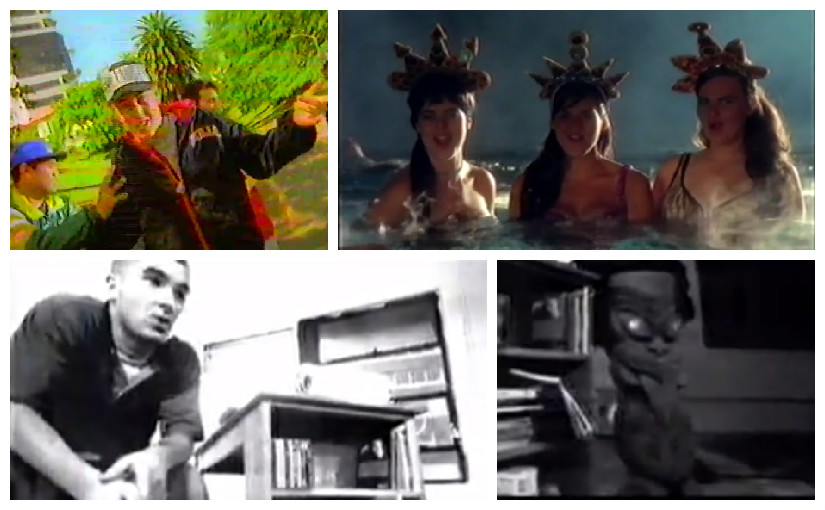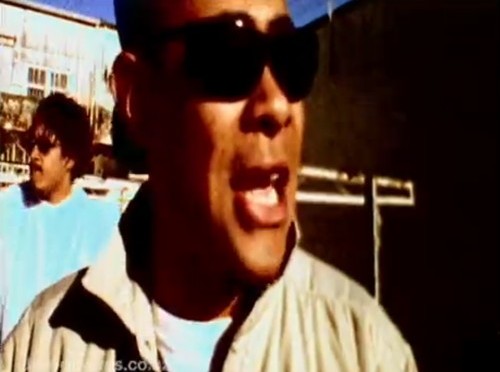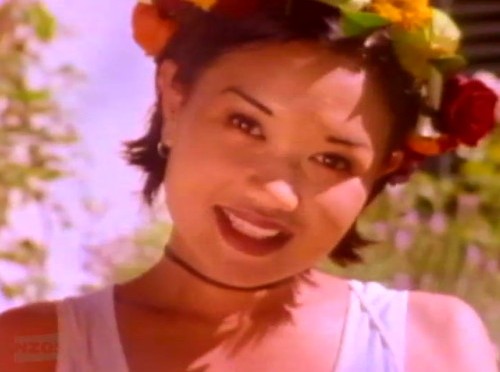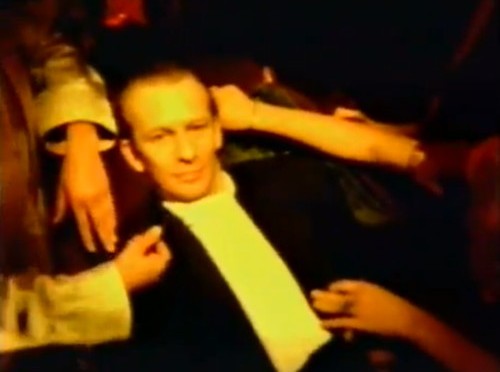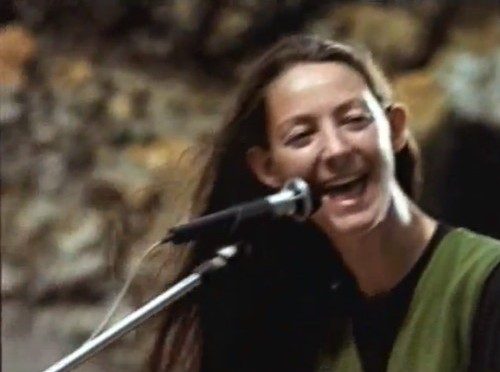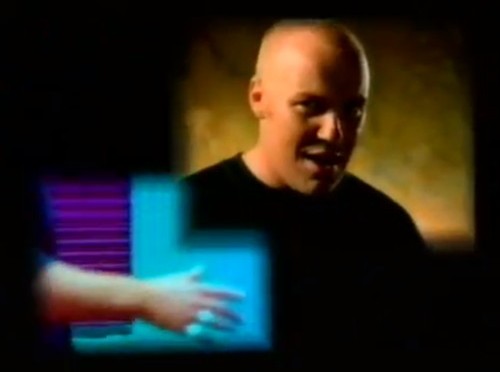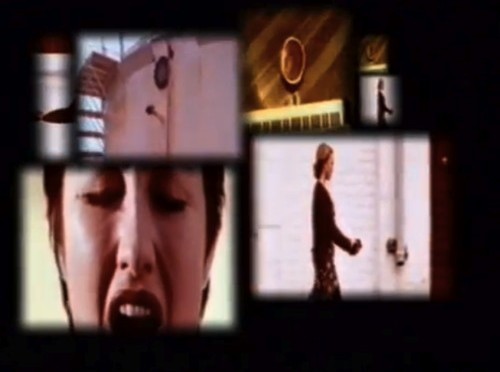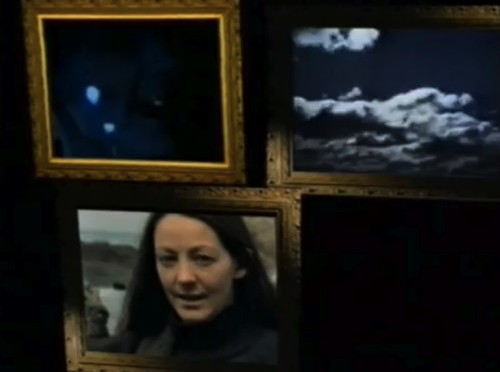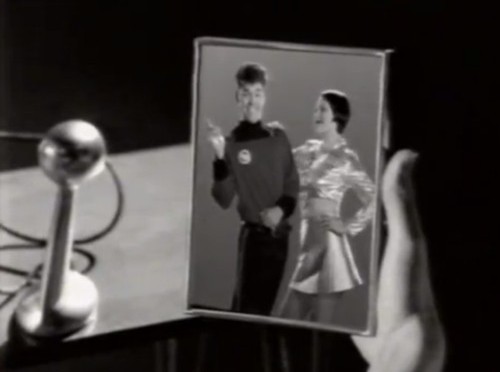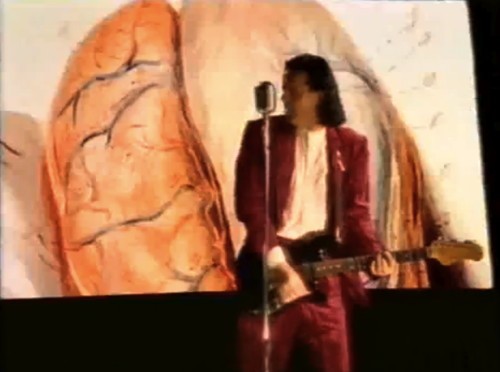Synchronised swimming appears in a music video, there’s a successful attempt at a cool urban scene and a less successful attempt at a gritty urban scene.
Category: 1994
Otara Phil Harmonic “Drummer Boy”
This is an interesting one. The Otara Phil Harmonic was a Phil Fuemana project, with vocals by Johnny Sagala and Ermehn, and Lole singing the chorus. This song might not actually have had NZ On Air funding. But the one thing I do know is that on Christmas Day 1994, “Drummer Boy” was at number 40 in the charts, before quietly slipping away into the silly season. But then they were up against Purest Form’s yuletide power ballad.
While the song is very loosely based around the classic Christmas song “The Little Drummer Boy”, it’s not an overtly Christmas song. It has rapped verses with Lole singing about her “drummer boy” in the chorus. It’s very reminiscent of DJ Jazzy Jeff & the Fresh Prince’s 1991 hit “Summertime” but with a random Christmas theme. But maybe that’s the problem. It’s too Christmassy to appeal as a regular hip hop track, but not Christmassy enough to become a yuletide classic.
The video is shot around South Auckland. It looks pretty low budget (which would suggest it’s not NZOA funded, but I’ve seen cheaper looking videos made with funding) but the quality of shots varies. Lole is filmed dressed like an office worker, sitting in a chair that looks like office reception seating. It’s like they popped in during her lunch break and filmed the chorus.
The rapped bits are done outside, around the back of some shops and it looks good. It’s the delicate balance of picking a location that looks edgy enough to work in a music video, but still looks like New Zealand.
But the best thing is the dancers. I like dancing in a music video. There’s not a lot of it, probably because it’s quite complicated to arrange and film, but this video gets it. A group of dancers break out some slow-mo moves, filmed in front of colourful roller doors as the golden-hour light makes everything look amazing.
Best bit: all the rappers sensibly wear sunglasses as they’re facing the bright sunshine.
Next… all the groove of the Pacific.
Love Soup “You”
 Well, this is an interesting video. Love Soup was Bic Runga’s high school band, a duo with Kelly Horgan, later of the Heavy Jones Trio. The Cashmere High pair came in third place in the 1993 Smokefreerockquest and part of the prize was a single and video to be released through Pagan Records. Only at around the same time, Sony had began to take an interest in Bic, signed her and bought her recordings from Pagan.
Well, this is an interesting video. Love Soup was Bic Runga’s high school band, a duo with Kelly Horgan, later of the Heavy Jones Trio. The Cashmere High pair came in third place in the 1993 Smokefreerockquest and part of the prize was a single and video to be released through Pagan Records. Only at around the same time, Sony had began to take an interest in Bic, signed her and bought her recordings from Pagan.
This left the tricky question of what to do with the “You” video. It had been funded and produced and therefore had to be broadcast. This was the old Bic and it wasn’t what she or Sony wanted to present as her New Zealand debut. So in order to tick the boxes, the video screened once, on a lazy afternoon, as a between-programme filler. No one noticed. But when it came time for Bic to properly launch her solo career later in 1995, plenty of people noticed.
The video itself focuses solely on Bic. Kelly doesn’t feature in the video at all, other than his guitar playing on the track. Bic dances around an empty house and on a rocky beach, while wearing long dresses and a garland of flowers. It’s different from the more stylish urban look she took for her solo videos. Because of this, while it’s a great song and Bic is already a skilled performer, it doesn’t quite feel like Bic Runga.
Bic is sometimes joined by a spooky figure, like a CGI shop mannequin. This CGI creature manages to make the video feel really weird. It ends with the figure attached to a wooden frame, in a crucifixion-like pose, floating off into the sky. This might actually be the most unsettling scene I’ve seen in all these videos.
The “You” video is an interesting glimpse into the early days of Bic Runga’s career. And it makes me glad that Sony were prepared to put a bit more money into her later videos.
Best bit: the weird winged creature that swoops past Bic as she emotes on the rocky shore.
Bonus: Watch the 1993 Canterbury final of the Smokefreerockquest. Love Soup start at 5:45.
Next… some yuletide beats.
Cosa “Still Water”
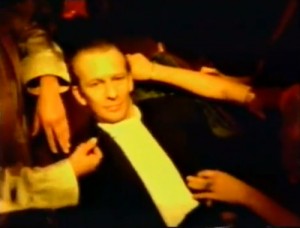 Cosa (formerly Cosa Nostra) was a project by producer Trevor Reekie of Pagan Records. “Still Water” is an atmospheric track with a some trip hop and dub styles.
Cosa (formerly Cosa Nostra) was a project by producer Trevor Reekie of Pagan Records. “Still Water” is an atmospheric track with a some trip hop and dub styles.
The video was directed by Mark Tierney and has a slight sci-fi flavour to it, a bit like the dream worlds of “Inception”. On a deserted grassy hill, Trevor is beckoned by a curious Asian man who takes him to a relaxing day spa. Though being a slightly weird music video, this ain’t no ordinary relaxing day spa.
Trevor lies down and is pampered by a number of Asian women. Their benevolent stroking seems to take him into a room where some cool people are partying. Is it real? Well, is the relaxing day spa real? Is the Asian man real? It’s all getting pretty Matrix.
Lava lamps blob, parasols spin, bubbles are blown, belly dancers shimmy, fire poi are twirled and the partygoers laze around in a haze. It’s like everyone in the room took too many Neurofen Plus, except for the one guy who’s dancing. Yeah, there’s always the one guy who’s dancing.
But obviously this bliss can’t last. The Asian man appears again, which seems to signal the end of this trip. Trevor wakes up, finding himself next to the reflecting pond at Savage Memorial. It could be considered inappropriate shoot a music video at a mausoleum, but the dreamlike location of the memorial somehow fits with the fantasy/reality theme of the music video. And, well, you wouldn’t get that sort of experience at the Massey Memorial.
Best bit: the partygoer with pixie/Spock ears.
Director: Mark Tierney
Ngā Taonga Sound & Vision
Next… a secret debut.
The Brainchilds “Thinking About You”
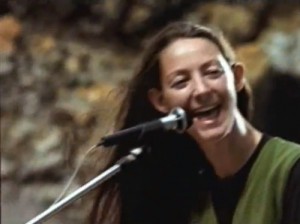 At first “Thinking About You” seems like a wistful song from someone getting in touch with a long-lost love. There’s a Front Lawn-style quirkiness to the song but it initially seems rather restrained.
At first “Thinking About You” seems like a wistful song from someone getting in touch with a long-lost love. There’s a Front Lawn-style quirkiness to the song but it initially seems rather restrained.
We find the Brainchilds playing their song on a beach. It’s a rough New Zealand beach, but everyone seems quite cheerful, so yay. This is cut with footage of and elderly woman writing notes on pieces of paper cut from the margins of newspaper pages. She’s filling up an envelope with these notes, which seem to contain the song lyrics.
This is a very intriguing start, but when the chorus comes along, the video loses steam. The Brainchilds just seem really dull performing on the beach and even the old lady can’t spice things up.
But very slowly things get weird. The old lady isn’t just stuffing the envelope with the notes; there’s hair in there too. And she feeds her cat an entire can of budget jellymeat. Lucky cat?
Back on the beach, as the song intensifies and gets more manic, the Brainchilds are slowly being swallowed up by the sand. The old lady has a mad glint in her eye.
The video was directed by Grant Lahood, who at the time was riding high on a series of three popular short films full of a similar kind of offbeat humour. So it’s a pleasant surprise to discover that he also got to have a go with a music video.
Best bit: the old lady’s lawn water bottle, back when it was thought those scared off pooing dogs.
Director: Grant Lahood
Ngā Taonga Sound & Vision
Next… a massage with extras.
Matty J feat. Dei Hamo “Somewhere You’re There”
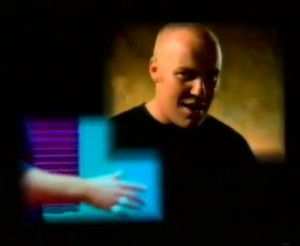 The first few seconds of this song seem quite sedate. There’s Marry J doing his soul crooning and it’s all very sweet when suddenly – bam! – here’s Dei Hamo with some rap to make things a lot more interesting.
The first few seconds of this song seem quite sedate. There’s Marry J doing his soul crooning and it’s all very sweet when suddenly – bam! – here’s Dei Hamo with some rap to make things a lot more interesting.
Dei Hamo is filmed in black and white, with the lyrics of his rhymes jumping around behind him, like a YouTube lyric video. This tantalising and explosive intro is over quickly, and we return to Matty J, walking along a city street.
The camera always films him walking left to right, and we also see split screen shots of different angles of him. I know what’s trying to be achieved here (the spilt screen style was very cool in the mid-’90s) but it seems a bit awkward here. It has been done with some really horrible looking bevelling effects, like the sort of stuff that showed up in webpage design in the mid-’90s. Was there a point where this style was cool? Maybe.
Dei Hamo bursts in again, introduced by Matty J as “the Madd Coconut”. And then Matty J continues on his journey, walking through cityscapes in bold colours, particularly purples and blues. Finally Matty J’s journey ends with him walking right up to his sweetie, but the video abruptly ends before there can be any grand reunion. (This might just be the version that’s online.)
It feels like there are some really good ideas behind this video, but not everything manages to work.
Best bit: Matty J’s simultaneous look of loved-up and cool.
Director: Craig Jackson
Ngā Taonga Sound & Vision
Next… lying in the sand.
Strawpeople “Crying”
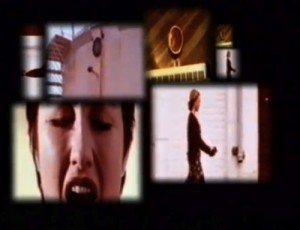 The Ngā Taonga Sound & Vision describes this video as “Elaborate split screens video monitors”, which isn’t quite accurate. It’s a collection of eight boxes that play footage. To me it looks more like a digital composite rather than eight actual video monitors (and flat screen technology wasn’t that advance back then).
The Ngā Taonga Sound & Vision describes this video as “Elaborate split screens video monitors”, which isn’t quite accurate. It’s a collection of eight boxes that play footage. To me it looks more like a digital composite rather than eight actual video monitors (and flat screen technology wasn’t that advance back then).
The video is directed by Mark Tierney and Paul Casserly, and it was a style that both would later use in videos they directed for other artists – Casserly for Greg Johnson’s “If I Swagger” and Tierney for Jan Hellriegel’s “Pure Pleasure”. And Matt Palmer used a similar style in his 1994 video for Maree Sheehan’s “Kia Tu Mahua”.
But the “Crying” video throws in an extra element. One of the boxes features Fiona McDonald singing the song straight to the camera and it’s almost totally unedited. Just a few flash cuts along the way.
The other boxes show scenes of urban Auckland. The tank farm features, back in the days when the tanks had utilitarian numbers painted on them, rather than poetic murals. Numbers feature a lot, with mysterious dates flickering across the screen and appearing on a television set in an empty room. There’s also a young women who walks around taking photos, and generally looks cool with her matt lipstick.
I like this video. I like that it’s a bit mysterious and doesn’t try to explain everything. A bit like that song.
Best bit: the giant camera the woman uses.
Directors: Mark Tierney, Paul Casserly
Ngā Taonga Sound & Vision
Next… a loving walk.
The Brainchilds “Tomorrow Never Knows”
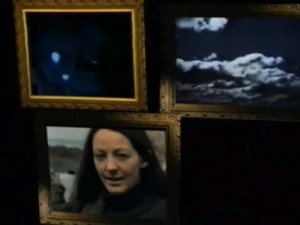 The Brainchilds was a pop outlet for musicians Steve Roche, David Donaldson and Janet Roddick (now working as mutli-purpose composers Plan 9). Their cover of the Beatles’ pop masterpiece strips away the more psychedelic elements of the fab four’s production. As a result, Janet’s lovely clear voice makes the song sound more like a hypnotherapy take. Turn off your phone, relax, and float downstream. You crave not ciggies. You crave not ciggies.
The Brainchilds was a pop outlet for musicians Steve Roche, David Donaldson and Janet Roddick (now working as mutli-purpose composers Plan 9). Their cover of the Beatles’ pop masterpiece strips away the more psychedelic elements of the fab four’s production. As a result, Janet’s lovely clear voice makes the song sound more like a hypnotherapy take. Turn off your phone, relax, and float downstream. You crave not ciggies. You crave not ciggies.
The video has relaxing, slightly trippy look, and it’s not a typical rock video. The only member of the band we see performing is Janet’s lip-synch of the song. The rest of the band are left to artfully wander around a forest of empty picture frames. But this all fits with the Brainchilds’ performance art background.
There are a lot of picture frames in the video. The action starts with a number of gilded frames in a dark space, floating around with footage of various outdoor scenes and Janet’s ghostly white face playing in them. The second half of the video puts the frames in a white space and sees the suited members of the group wander artfully amongst them.
There’s something quite pleasing about this. It’s using the latest innovations in digital video effects with some classic arty video tricks. And it doubles as a relaxation tape.
Best bit: man in a frame in a frame!
Director: Nigel Streeter
Ngā Taonga Sound & Vision
Next… lots of boxes.
David Parker “Love By Satellite”
David Parker had a lot of videos funded in the early years of NZOA funding, but they’re almost impossible to find online. So it’s very exciting to discover the space adventure of “Love By Satellite” is now available.
Directed by Jonathan King, the video takes its inspiration from 1950s sci-fi serial adventures, with David Parker playing a space hero, looking like a Thunderbird team member with snipped wires. Most of the video is shot in black and white, with period authentic papier mache planets and wobbly rocket ships. The few colours shot are David Parker outside of the space context, rocking with his guitar.
Our hero is marooned on a planet and is trying to broadcast a message to his space sweetie. The signal goes out over a good old-school style satellite (like Sputnik’s disco cousin), bounces of transmission towers and is picked up by the television at his girlfriend’s space house. Only she’s too wrapped up in reading a science fiction magazine and doesn’t notice his celestial greeting.
So what will happen? Will Astro Dave get the message through to his lady? Will she look up from her magazine? Well, as this is a serial, the video ends with the promise that the story will be “continued next week”. But that’s probably space weeks, much longer than earth weeks.
“Love By Satellite” is a sweet, country-tinged song and I like that the video has gone with a slightly unexpected treatment. But it seems to work really well, probably because both the song and the video have themes of Americana, and tales of love always have a place in science fiction.
Best bit: the quality range of model spacecraft.
Director: Jonathan King
Ngā Taonga Sound & Vision
Next… a frame-up.
Alastair Riddell “Peace Dream Solution”
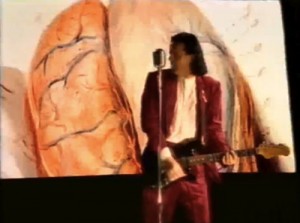 It’s said that when Alastair Riddell and Space Waltz burst onto the scene in 1974 with the Bolan- and Bowie-inspired “Out on the Street” on the New Faces talent show, it was like aliens from planet pop arriving to show the backward earthlings of New Zealand a thing or two. But 20 years later Alastair shows up wondering “whatever happened to the peace dream solution?”
It’s said that when Alastair Riddell and Space Waltz burst onto the scene in 1974 with the Bolan- and Bowie-inspired “Out on the Street” on the New Faces talent show, it was like aliens from planet pop arriving to show the backward earthlings of New Zealand a thing or two. But 20 years later Alastair shows up wondering “whatever happened to the peace dream solution?”
Restlessly sitting in a Le Corbusier chaise longue, he watches a rapidly changing slide show of images of world history and culture from the last two decades. Martin Luther King Jr, starving Africans, Ronald Regan, Pope John Paul II and Elvis flash past, like the reprogramming scene from “A Clockwork Orange”.
But the song comes across less as a lament and more as a dig at the boomer generation, the former flower children who can be now found in the gyms, concerned more about their physique than peace and love.
I found a 2007 TV show where Paul Holmes grills Alastair about the meaning of “Out on the Street”. He answers, “A lot of people were making a lot of noise about the new age, the age of Aquarius. We had “Hair” some years before. And I really thought that the age we lived in was a bit more like a whore or a lady of the night.” So it seems he was never a great believer in the promise of the peace dream solution, but perhaps it come as a shock just how rapidly his generation discarded those ideals.
As the video progresses, Alastair gets off the couch and turns his back on the slideshow, instead rocking out with his guitar. There’s also a bit of animation, involving Elvis stamps and strongmen. Very ’90s.
The video ends with Alastair in a military uniform, singing “all you need is love”. It’s like something out of “Hair” – the hippy is shockingly revealed to be part of the establishment. Whoa.
Best bit: the Regan-faced pope.
